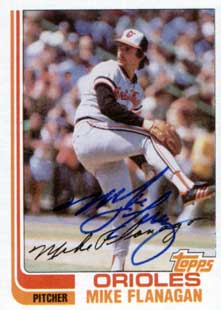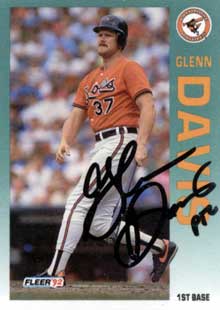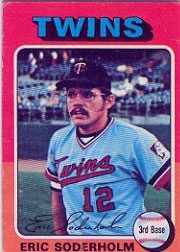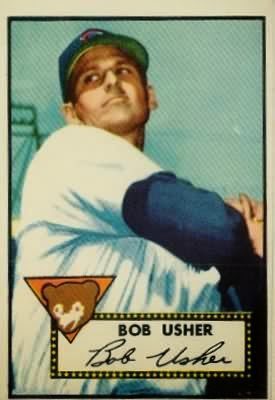Going. Going. Gone.
Baseball Almanac
TTM Signers Charging $100 Fees
Fee-charging autograph signers haven’t hijacked this hobby…yet.
I counted five pages of prices in Harvey Meiselman’s 2013 Baseball Address List.
Bargains remain. Sid Bream, Dana Kiecker and Reggie Cleveland ask just one dollar per card autograph.
The top fees are $100 per autograph from two Hall of Famers, Yogi Berra and Bob Allen.
Oops. Wait a second. Hmmm…
Bob Allen. I looked him up.
Debut 1961 Cleveland Indians. Reliever for five seasons. Career 7-12, 4.11 ERA.
Wait! The page has a Bob Allen autographed card. Was that a $100 acquisition, too?
I contacted Sean Holtz, the talented founder, researcher and webmaster for the site. He replied:
As for Allen his signature is about 25 years old. Can’t remember exactly the year. I live in Florida, have my whole life, even went to middle school right next door to where the Expos did their Spring Training. Braves too. I would get countless signatures with all my friends. We would then trade. So I’d use a clipboard, put 3 cards across the clip, get them signed. My two other best friends did the same. We’d then trade! What I didn’t know was what a great idea that was decades later. Anyway, Bob had retired for a while. I didn’t have any cards for him, but there was a card shop there and we picked up a couple cards for him.
That is no typo, baseball fans. The figure is confirmed
.
I asked Harvey for his take on lavish Bob Allen. He responded:
Baseball Almanac Website Continues As Premiere Online Autograph Museum
 |
| The website has great examples of autographs: Check out the page of the recently-deceased hurler here: |
It’s no secret that I feel one of the best websites around is Baseball Almanac.
I first wrote about this treasure trove of baseball info riches in 2010. Founder and webmaster Sean Holtz kindly provided a fun update on his 2011 discoveries. Sean writes:
“My collection has been doing great. In the past year I’ve grown from just below 7,000 different signed cards to my current total of 7,701. Most are new players, rookies from the past few years, but there are probably 50-75 deceased players.
My way of collecting has changed a lot over the years. Now I use eBay to buy as many certified signature cards as possible. Especially the cheap cards for less than popular players that I can get for $1 to $3 – I love them. Even if they are not in a uniform, or in a minor league uniform, or one with no markings. I also deal with two hard core collectors that share their duplicates with me. One lives in New York, the other in Chicago, both are season ticket holders so they get a lot of current players for me as well. One is like me and trying to get one card from every player possible, he lets me know when a PSA or JSA card from a deceased player appears on eBay that I don’t need (which he doesn’t buy first himself). I’m good with that.
Former players have sent about 8 or 9 different signatures. Family members (wives, children) probably another 5 or 6. So they are nice about helping and it still feels really nice and unexpected to receive them directly from the player or family. No others were personalized though, at least not via cards.”
Autographs as free gifts? Unsolicited? Sean’s good fortune comes down to one huge difference.
Some collectors write letters that say they’d appreciate that guy’s signature.
Meanwhile, by Sean’s ACTIONS, he shows that he appreciates said GUY.
As I suggested in an earlier post, Baseball Almanac is a great venue for getting a free, first look at an authentic autograph. Such comparisons are a great, fast help.
Another fascinating element on Baseball Almanac is Sean’s growing database of salaries. Talking with strangers about sex, politics or religion is tricky. The fourth taboo subject is money. Sean feels otherwise. He says:
“The details for the salaries is courtesy of Google. Once they opened Google Books and added Baseball Digest, Ebony, countless newspapers, books, and made them all searchable it has been a huge help. I’ll go there to source a quote and dig for salaries every time I upgrade a player. Many times I’ve found nothing. Many times I’ve found estimates (which I don’t use) and many times I’ve found a lot more data than I had hoped for which I think is a great addition.
If people writing players wanted to ask they should be specific. If they simply wrote can you tell me about your contracts or something general I doubt they would get much of a response. If they asked, please tell me about your first major league contract – how did you feel, where did you sign it, do you remember how much it was for, did it include a signing bonus, were you nervous – and things like that I can almost guarantee they’d get some good responses.”
I’m taking Sean’s suggestions to heart. History is escaping us as retirees pass away. The irony at looking at those bargain prices from past contracts is that so many of these baseball-loving men thought ANY money was a jackpot. To be paid ANYTHING to play the game they loved? For them, a dream come true.
Glenn Davis Offers Autograph ‘Gift’ Lesson
 |
| Baseball-Almanac.com posts an AWESOME collection of in-person autographs. Note that Davis added the “Praise the Lord” P.S. |
In case you missed these inspiring comments by Tim (regarding elusive signer Glenn Davis), here’s a recap:
“I recently received Glenn Davis through the mail. I sent my request to his home address and included a small donation for The Carpenter’s Way, a home for children that Mr. Davis established. He seemed to appreciate the donation since he signed the cards that I sent and included an extra card signed.
Sometimes it takes a little research and creativity to get some players to sign.”
and…
“Thanks for the feedback, Tom. As you have pointed out many times, it is important to personalize the letters that you write. In this case, I read about Mr. Davis and The Carpenter’s Way. In the letter, I referenced the important role that The Carpenter’s Way is impacting youth in his community and told him that I wanted to help with the mission of The Carpenter’s Way with a small donation.”
I wanted to share them again, because I think I understand the lesson they provide. I thank Tim for making a huge point that everyone in the hobby needs to remember.
No, I don’t think that everyone sending a donation to The Carpenter’s Way will guarantee that Davis signs forever. He may. Or, he may start asking for higher and higher donations. Personal interaction can devolve into a mere business transaction.
Tim gave a gift. That’s why he got one in return. He didn’t HAVE to make a donation. He WANTED to.
Money isn’t the ultimate answer. Tim created a personal appeal to Davis. He did more than quote career HR numbers. Tim’s letter addressed Davis as a player and person. That’s the goal I set for every letter I send.
“Have to” versus “Wanted to.” That’s it!
Tomorrow: Learn the math of baseball, with pitcher-turned-teacher Dave Fleming
Eric Soderholm Honors Three Twins Legends
 |
| No signature change in 35 years! |
Eric Soderholm lived two lives. He’s known to many as a gritty Minnesota Twins third baseman. Others remember the reborn slugger who found his career comeback as one of the Chicago White Sox “South Side Hit Men” in 1977.
I saw him play in Minnesota, providing the foundation for two questions.
First, I asked what it was like to play in the company of three stars — Harmon Killebrew, Tony Oliva and Rod Carew. Soderholm replied:
“Killebrew, Carew and Oliva were world class, on and off field. Learned from their determination.”
I shivered when I thought about seeing Soderholm play at Metropolitan Stadium. In fact, every Twins game there left me with a BRRR! My folks loved the easy access to the ballpark from Iowa. Other teams played in CITIES. The Twins played…nearby.
“The Met was a nice park for right-handed hitters — but COLD!”
A knee injury shelved Soderholm for all of 1976. When The Sporting News named him American League Comeback Player of the Year, I wondered how he felt about the title.
“Comeback Player of Year was a great honor — and appreciated after I worked so hard on my knee.
Best wishes,
Eric Soderholm”
A well-done profile of Soderholm, written by Mark Liptak, can be found at one of my favorite websites, Baseball Almanac.
Tomorrow: An inside peek at the “Baseball By The Letters” mailbox.

